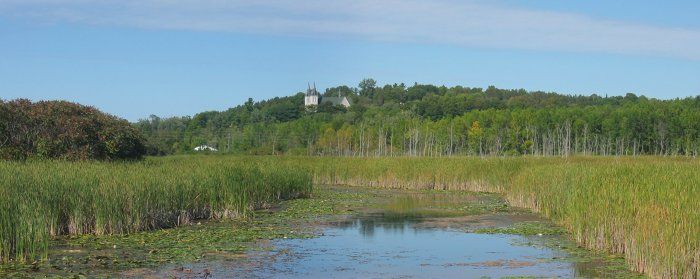Self-Taught MBA: Interesting, New Opportunities for Green Developers

My buddy Bob Hampton develops large tracks of residential lots in the Midwest. After a long period of economic recession since 2008, business has rebounded and he’s now selling 50-to-80-percent of his lots before grading even begins. “It’s better than ever,” he tells me. So I didn’t understand why Bob was talking about shifting focus toward a whole new business niche. “I can trade wetland for $75,000 an acre,” he explains. Land he can buy for as little as $1,500 an acre and then develop into – not homes or commercial property – but protected “cattail ponds”.
The idea of wetland banking arose in the mid 1990’s as a means to offset unavoidable, or economically unfeasible impact to otherwise developable land. Similar to the concept of carbon banking, a developer can trade wetland area on his site for a greater area of wetland within the same geographic drainage area to another entity. As the EPA describes it in its Mitigation Factsheet, “Mitigation banks are a form of “third-party” compensatory mitigation, in which the responsibility for compensatory mitigation implementation and success is assumed by a party other than the permittee.”
This transfer of both land use and liability appeals to developers, who would otherwise not only lose valuable development area for their project, but become responsible for the design, construction, monitoring, ecological success, and long-term protection of wetland areas on their site.
The third party that sells the wetland credit assumes the responsibility of enhancing and then maintaining the wetlands in perpetuity. The environment gains a dividend, too, as the area banked is always larger than the original wetland claimed for development.
My friend stumbled on this mechanism almost by accident. He is presently developing a large, lakefront community and encountered some layout issues on the plat on account of wetland areas that he could not impact with fill. The environmental engineer working on the project suggested trading some of the wetland area for reclaimed wetland on another of Bob’s properties within the same drainage basin. The secondary property happened to be on land Bob had built a rural workshop and boat storage for private use. Instead of preserving all the wetland on the lakeside development, the engineer proposed designing a larger area of reclaimed wetland on dormant land that Bob would otherwise just have to mow, and in this way eliminate the planning bottleneck on a large number of desirable lots.
A Mature Development Niche
Although the concept of wetland banking first appeared in 1993, it has taken several years to mature into a well-defined and regulated method of mitigation that has enough certainty to exploit commercially. Mitigation banking not only frees up developable land, but offers the EPA easier monitoring, with professional, long-term stewardship. And beyond the value of developable land, the developer avoids the headache of dealing with EPA wetland permitting process, offering the developer regulatory relief by using a bank to satisfy permit conditions.
After discussion with his engineering team, Bob learned that he could work with farmers and other large land holders to setup banks and trade wetland credits at a profit. Since then, Bob has become a regular at the local steakhouse frequented by area farmers in order to cultivate relationships and find wetland development opportunities. Along with a team of skilled environmental and hydrological engineers, he’s opened an interesting new niche for his company, which promises to be very lucrative.
Old House Journal Recommended Products
Fine Homebuilding receives a commission for items purchased through links on this site, including Amazon Associates and other affiliate advertising programs.

8067 All-Weather Flashing Tape

Affordable IR Camera

Reliable Crimp Connectors

Look like a development near you? Wetland banking provides a benefit both to builders and to the environment.






















